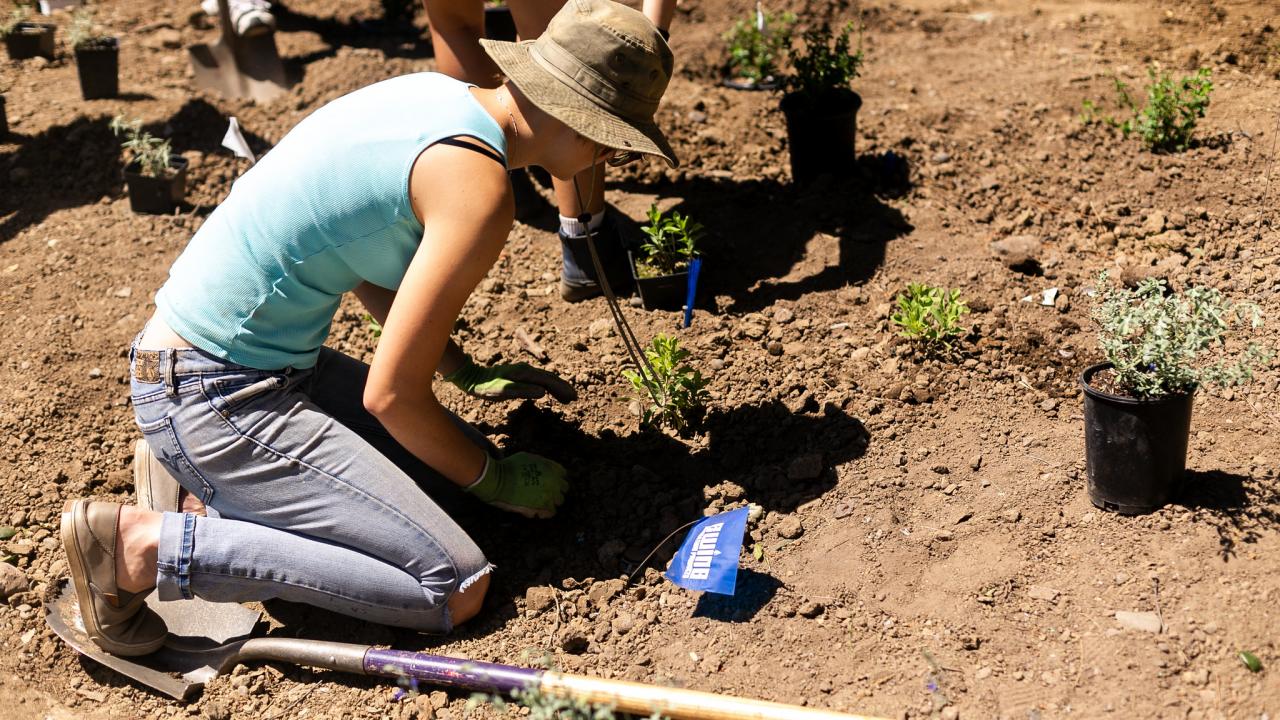
10 TIPS for Summer Planting
Watch the Video!
 Watch as Taylor Lewis, nursery manager, goes over in more detail each of these ten tips! See the video.
Watch as Taylor Lewis, nursery manager, goes over in more detail each of these ten tips! See the video.
by Taylor Lewis, nursery manager
"Should I do it? I thought fall was the best time? But it’s so hot?"
It’s true that summer is not the best time of the year to install new plants, but it doesn’t mean that you can’t. Watch (or re-watch) a video we produced online during the pandemic called "Ask the Garden Gnomes" for advice or scroll down to find some quick tips.
1. Water
The single largest issue you’ll face, when planting in the summer, is water. Both ends of the hydration spectrum can be fatal to most plants. If the tips of your plant are wilting, limp and droopy, and the leaves seem to be fatigued, you should give it a drink.
Water plants before planting: Transplant shock can be greatly reduced if a root ball goes into the ground wet versus dry.
Frequent irrigations: Many perennials and shrubs will benefit from irrigation 2-3 times a week. Add 1-3 gallons of water at each application for establishing 1 gallon and 4 inch plants and 4-5 gallons for establishing 5 gallon plants. Larger plants should need less relative water, less frequently.
Water deeply: Imagine that you’re trying to get the very bottom of the plant wet; a dash and a sprinkle won’t cut it.
Actually check if your soil is wet: Stick your finger in the soil; moisture meters can be hit or miss and less accurate than I like to be. If soil sticks to your finger when you remove it, it’s wet enough. The best spot is in the interface between the new root ball and the soil. During the summer, the ground often “looks dry” on the surface without a mulch layer of 2-4 inches.
2. Apply Mulch
Applying a 2-4 inch layer of compost or bark to the top of the soil will greatly reduce the loss of surface water by shading the ground and increasing the humidity at the surface. Smaller bark “stacks” together better than large, chunky bark and allows less dehydrating, sunlight penetration.
3. Prune Your Plant
Removing some of the outer or excess foliage will reduce water needs and ease transplant shock. You can easily remove one-fourth to one-third of the plant without harming the plant.
4. Watch for Wind
Be attentive during sustained wind activity. Wind can be a serious foe in the battle for water. The plants won’t need a full soaking, but a surface watering should be sufficient to keep the plant from going totally dry.
5. Consider Planting Time
Plant in the early morning and in the evening; avoid hot afternoon planting times. Reducing as many stressors on a plant, that can’t follow you inside chasing AC, will help make your new plants successful.
6. Use Planting Rings
Mounding a moat/basin around the plant can help to both hold a greater quantity of water and direct the slower penetration of water to the roots.
7. Provide Temporary Shade
Since you won’t be using your umbrella anytime soon, you could create your own shade and give plants that are heavily exposed some extra relief.
8. Be Vigilent
Too many times faulty irrigation systems, brand new plants, and summer vacation schedules coalesce into unfortunate scenarios. Visit your new plants often, make sure everything is looking good and check them for sufficient water. If you do leave town for an extended period, let your house and/or plant sitter know which plants to keep a watchful eye on.
9. Try Organic Starter Fertilizer
Beneficial micro-fauna will aid the plant with the uptake of water and nutrients while easing the shock of transplanting.
10. Accept a Few Casualties
Even if you lose 10% of your plants, think of the awesome head start the other 90% will have on next year!
